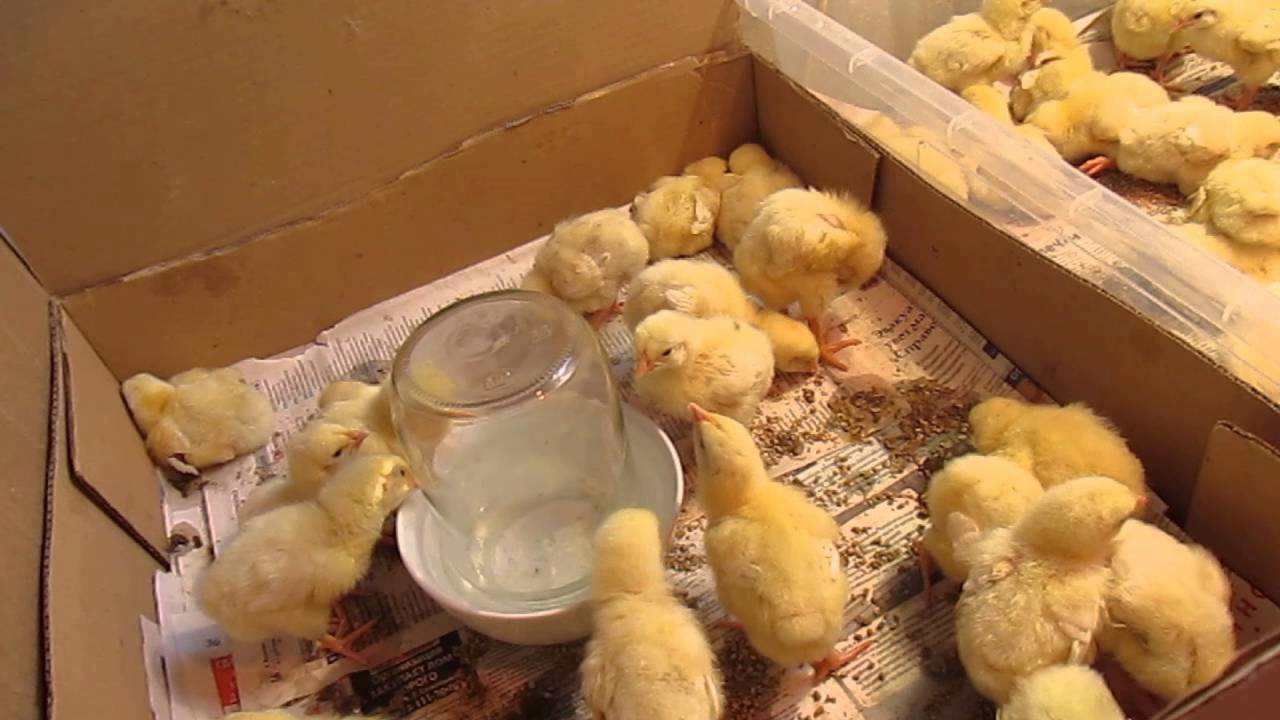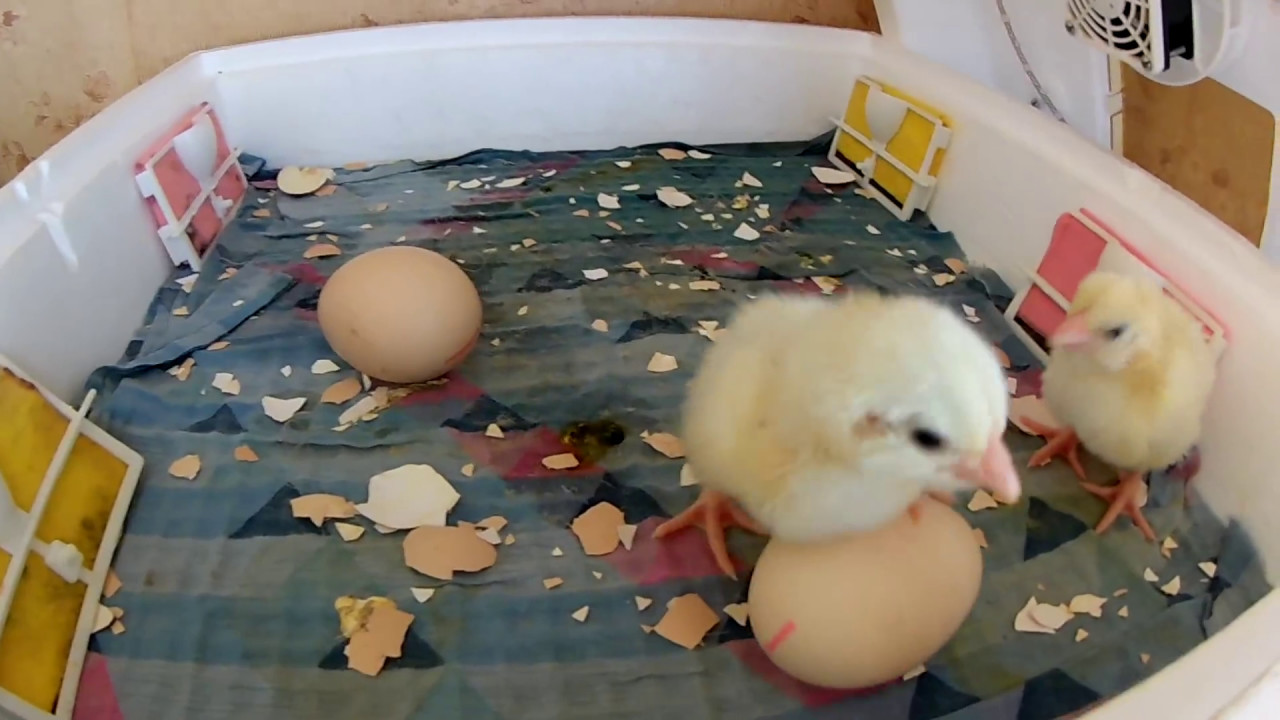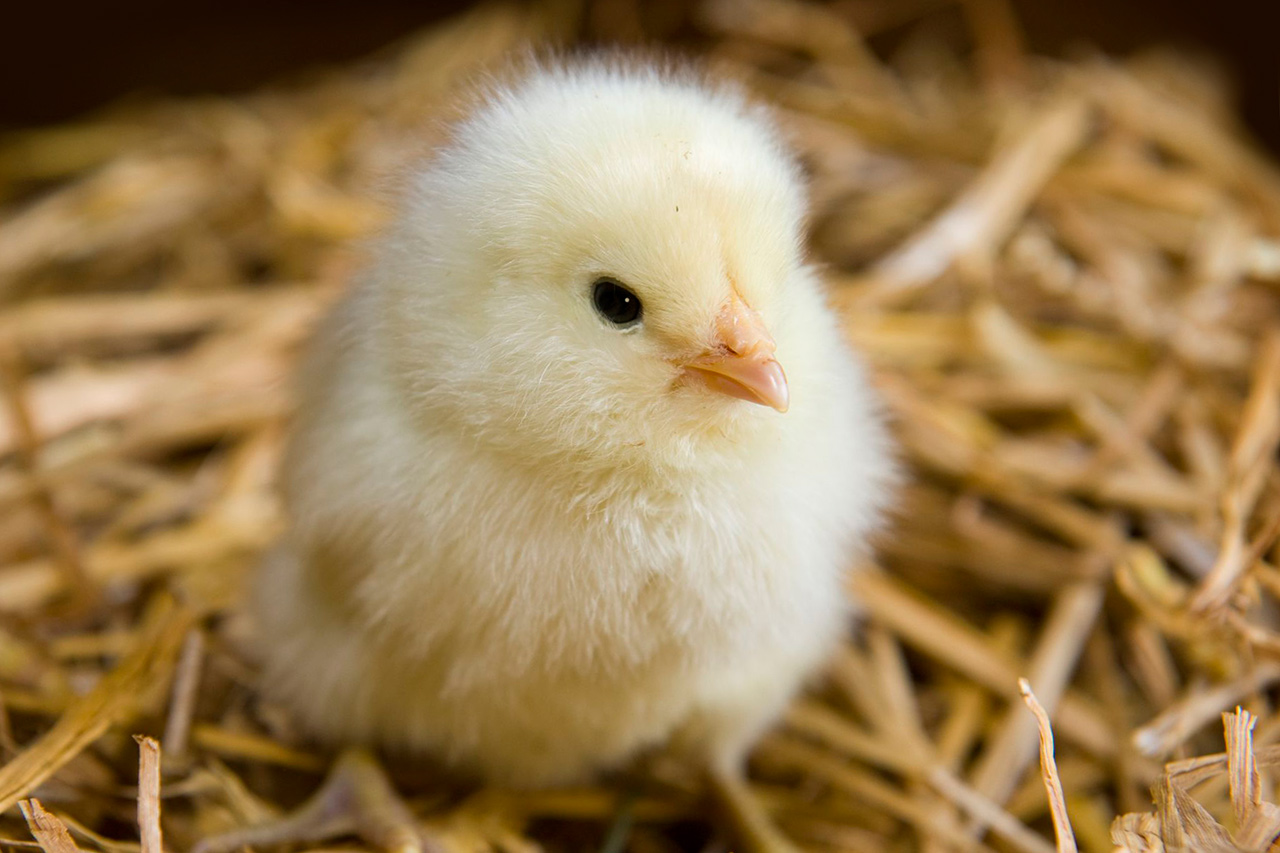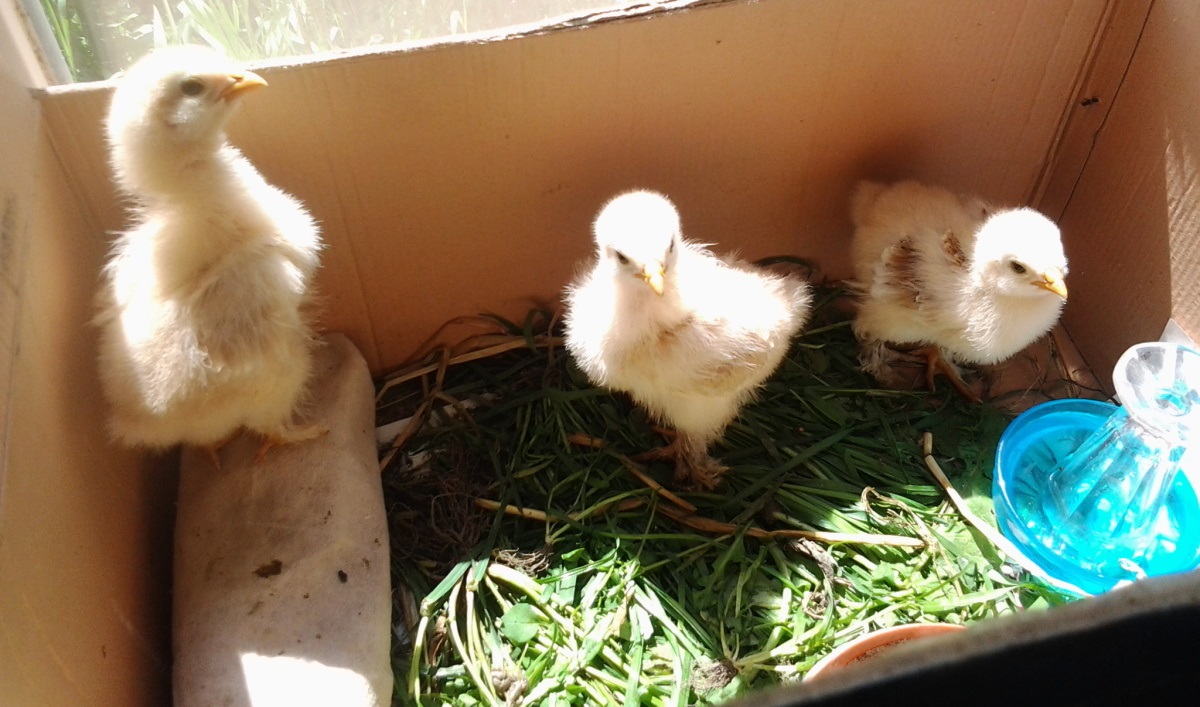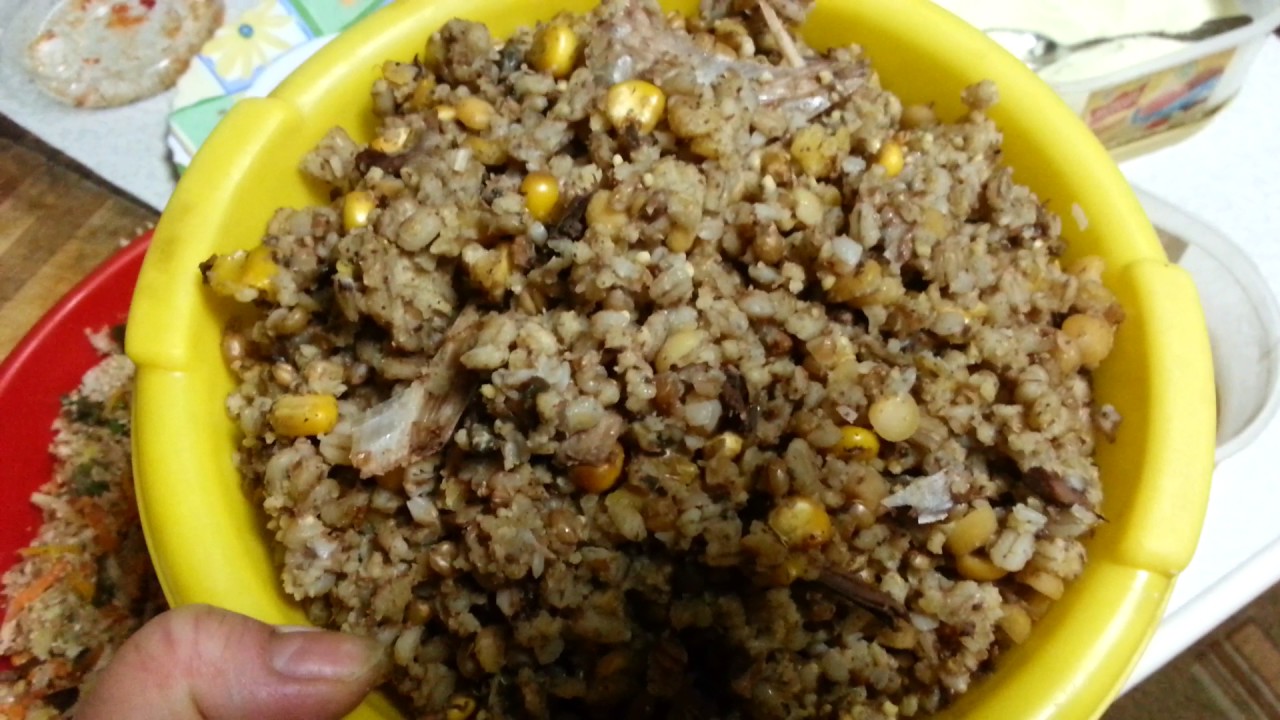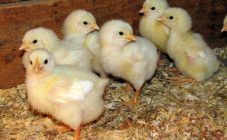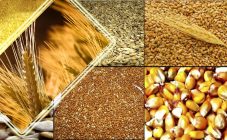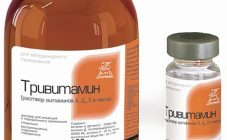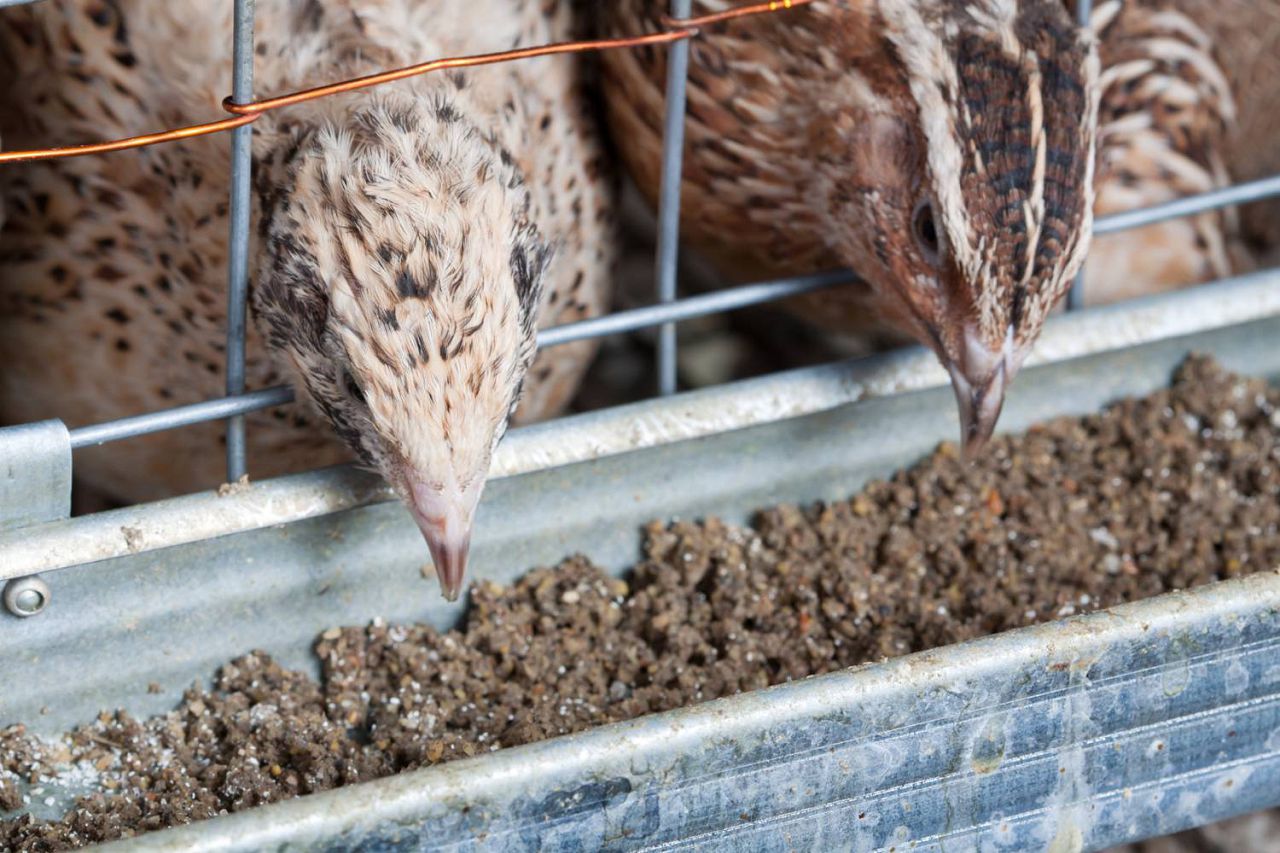Content:
The nutrition of chicks in the first weeks of life determines their future health. Together with the food, the body receives the substances necessary for their proper growth and development. The diet is selected so as to provide them with all the necessary nutrients.
General rules for feeding chickens at home
Balanced chicken feed contains:
- proteins - are responsible for gaining muscle mass, are the building blocks of tissues;
- fats - take part in metabolic processes, play the role of a reserve energy reserve;
- carbohydrates - fuel for the body, promote the absorption of fats, nourish the brain;
- vitamins - strengthen the immune system, support normal vital activity, participate in biochemical processes (with their deficiency, various pathologies develop);
- mineral substances - form the musculoskeletal system, down and feathers, regulate the work of internal organs, accelerate growth.
Feeding recommendations:
- All chicks should receive an equal amount of food. Weak chicks are taken and fed separately.
- The feeder is washed after every meal.
- The water in the drinker is changed regularly.
- Once every 5-7 days, the birds are soldered with a saturated solution of potassium permanganate. It destroys bacteria and prevents intestinal diseases.
- The feeders are covered with a grid with large holes. It is placed so that babies have access to food, but do not climb into it with their paws.
Chicks have a small supply of nutrients immediately after hatching. But the sooner they begin to peck food on their own, the stronger they will grow. The survival rate of chicks that received food during the first hours of life is several times higher. When buying day old chickens, be sure to check with the seller whether they were fed after birth or not.
From the first to the tenth day, the feeding regime is very frequent - every two hours. As you grow older, the frequency is reduced:
- feeding chickens up to a month is carried out with an interval of 4-5 hours;
- from 1 to 1.5 months - after 6 hours.
Older chicks are transferred to 3 meals a day. The food is always given at the same time so that they get used to eating on schedule. Each time, a fresh mixture is prepared and different ingredients are included. Increase portions as you grow. Birds should be full but not overeat.
What can and cannot be fed to laying hens
The diet of laying hens is slightly different from the broiler menu. If in the latter the emphasis is on a quick set of mass, then in the former, the quality of the eggs is of paramount importance. Eating at a young age largely determines future productivity.
The answer to the question of how to feed the chickens depends on their age. The list of permitted foods grows as they develop as the digestive system adapts to new ingredients. You need to expand the menu gradually. If you give babies too rough food, they will damage the esophagus.
What to feed chickens in the early days
Chicks that have just hatched are given boiled egg yolk.It is mixed with a small amount of cottage cheese and cereals (millet, corn, wheat).
How to feed small chickens (the number of components is indicated for 10 heads):
- 1 yolk;
- 50 g of cottage cheese;
- 50 g of cereals.
Laying chicks are provided with sufficient calcium. The strength of bones and shells depends on this substance. A little kefir or yogurt is added to the feed, choosing products with a low fat content.
A balanced diet is impossible without fresh herbs. It is administered from three days of age. The herb is a source of vitamins, minerals and dietary fiber. It should account for a fourth of the diet.
The greens are finely chopped to make it easier for the chicks to peck. What exactly can be fed to chickens:
- dandelion;
- plantain;
- clover;
- wood lice;
- duckweed;
- nettle;
- sorrel;
- parsley;
- dill;
- lettuce leaves;
- green onions;
- knotweed.
Some herbs are harmful:
- buttercup;
- cheremitsa;
- celandine;
- elder;
- juniper;
- burdock;
- horse chestnut;
- yarrow;
- potato and tomato tops.
The amount of cereals in the feed is gradually increased. By the tenth day, it makes up the bulk of the diet.
What to feed weekly chicks
Wet mash is prepared for chicks who are 7 days old. They add different types of cereals in equal proportions. Portions are made larger, and the frequency of feeding is reduced to 6 times a day.
What to feed weekly chicks at home:
- wheat, barley, corn and oat groats;
- dairy products;
- fresh herbs.
During this period, peas are carefully introduced. At first, they put quite a bit so that the chickens do not refuse food because of the specific smell. Then the amount of the product is increased to 10-12% of the total weight of the feed.
What to feed when the chickens are 10 days old
Boiled eggs are excluded from the diet of ten-day-old chicks. They continue to give cereals, fermented milk products and grass. New components are also added.
What to feed 10 day old chicks:
- Boiled vegetables - potatoes, pumpkin, carrots, zucchini. Beets and potato peelings should not be given. The former is frustrating, while the latter are not helpful.
- Crushed chalk and eggshells - provide young growth with calcium.
Gravel with a diameter of 2-3 mm is placed near the trough or once a week put it in the feed (5 g per head).
What to feed two week old chickens
Two-week-old chicks are fed with wet mash. A small amount of salt is added (0.05 g per head). It increases appetite and saturates the body with sodium and chlorine.
The better to feed three week old chicks
From now on, babies are fed 4 times a day. They are regularly taken out of the house to the street. Under the sun's rays, the body produces vitamin D, which is necessary for the absorption of calcium.
On a walk, the kids independently eat greens, insects and worms. But portion sizes are not reduced. Young animals are actively moving and growing, so the need for food does not diminish.
What do monthly chickens eat
Monthly chicks are gradually taught to eat an adult diet. First, coarse grains are introduced, after 1.5 months, whole grains are given. Fish oil and calcium supplements are added to the feed. Some bread is allowed. In broiler breeds, it accelerates weight gain.
The mash is prepared on the basis of potatoes. The remains of human food are added - fish, meat, cereals, soups.
Monthly birds spend most of the day outdoors. Insects and greens provide them with vitamins and protein, and small stones - with minerals.
What are two month old chicks fed with?
Chicks are transferred to 3 meals a day and fed for adult chickens. But the portions should be larger because the body continues to develop.
Feeding rates for egg breeds
The amount of food required for the chick is determined in accordance with its age:
- up to 5 days - no more than 10 g per head;
- from day 5 - 12 g;
- after 14 days - 20 g;
- after 21 days - 27 g;
- after 30 days - 35 g.
The table shows how much feed one bird needs in grams.
| Feed | Age of chicks (in days) | ||||||
|---|---|---|---|---|---|---|---|
| 01.05.2018 | 06.10.2018 | 01.11.2020 | 21-30 | 31-40 | 41-50 | 51-60 | |
| Ground or crushed grain | 4 | 7 | 11 | 18 | 28 | 35 | 45 |
| Oilcakes and meal | — | 0.2 | 0.5 | 0.6 | 1.2 | 1.5 | 2 |
| Low fat cottage cheese | 1 | 1.5 | 2 | 3 | 4 | 4 | 4 |
| Hard boiled egg | 2 | 2 | — | — | — | — | — |
| Boiled potatoes | — | — | 4 | 10 | 14 | 18 | 20 |
| Sour milk or kefir | 5 | 10 | 15 | 20 | 25 | 30 | 30 |
| Fresh herbs | 1 | 3 | 7 | 10 | 15 | 17 | 20 |
| Shell or chalk | — | 0.2 | 0.4 | 0.5 | 0.8 | 1.1 | 1.1 |
| Bone flour | — | 0.2 | 0.4 | 0.5 | 0.8 | 0.9 | 0.9 |
| Fine table salt | — | — | 0.05 | 0.05 | 0.08 | 0.1 | 0.1 |
| Corn, barley, millet | 5 | 9 | 13 | 22 | 32 | 39 | 48 |
| Millet | 2 | 2 | 3 | — | — | — | — |
| Wheat bran | — | — | 1.5 | 2 | 2 | 3 | 4 |
How to make a chicken mash
Most poultry farmers are moving away from commercially available feed in favor of home-cooked food. They are confident in its quality and are able to independently control the amount of incoming nutrients.
Mixes are made to feed the chickens. It is a boiled or steamed mixture that consists of:
- vegetables;
- crushed grain;
- cake;
- vitamin and mineral supplements.
The set of components changes as the chicks grow.
There is no generally accepted composition of mash. Each breeder prepares it according to the general principles of a healthy diet. The components used are conventionally divided into 3 groups:
- The basis is grain or cereals. Corn and wheat must be crushed. The latter is rarely given to layers, because it accelerates weight gain. Small grains - millet, millet - are cooked whole.
- Nutritional Supplements - Contains essential vitamins and minerals. This category includes raw and boiled vegetables, fresh herbs, dairy products. To make the mash become crumbly, bran is added. Waste from the table is placed in the feed of older chickens. But they should not contain a lot of salt, sugar and seasonings.
- Vitamin-mineral complexes - yeast, fish oil, bone meal or other formulations for chickens purchased from a veterinary pharmacy.
The approximate composition of the mash for 7-20 day old chickens per day:
- chopped corn or barley 7-15 g;
- boiled mashed potatoes 4 g;
- cake or meal 0.5 g;
- bone meal 0.4 g;
- cottage cheese 2 g;
- chopped greens 7 g;
- mineral additives (crushed eggshell, chalk or shell) 0.4 g
Pour boiling water over the components and mix thoroughly. The result should be soft and moist, but at the same time crumbly porridge. It is easy to check the correctness of preparation. You need to hold the food a little in your fist, and then open your palm. A good mash will crumble into pieces.
The mash is not prepared for future use, because it quickly deteriorates. The maximum storage time is 3 hours. The troughs are washed and disinfected immediately after eating. If the food starts to rot, the chicks will be poisoned the next time they eat.
Tips and tricks from experienced poultry farmers
Breeders with many years of experience advise novice poultry breeders to listen to some recommendations:
- To determine if the chicks have enough food, you should look at their reaction. If they greedily rush to a new portion, its size increases slightly. When the birds go to the feeders listlessly and eat without much desire, the amount of food is reduced.
- Chickens are best bought from specialized factories or large farms. It is dangerous to buy young animals on the market - sick birds can be caught.
- Incubator babies have feeding problems. In order for them to start pecking food on their own, it is worth knocking on the food several times with the tip of a knife, as if a hen is doing it. This will help them understand what they need to do.
- In addition to a proper diet, babies need to be provided with good housing and care. They are additionally heated and protected from drafts.
So that feeding the chickens does not become a problem, the nuances of their diet are studied in advance. The lack of nutrients negatively affects the health of birds, and sometimes leads to mass death.A well-designed menu allows you to save the livestock and bring out chickens with strong immunity.
